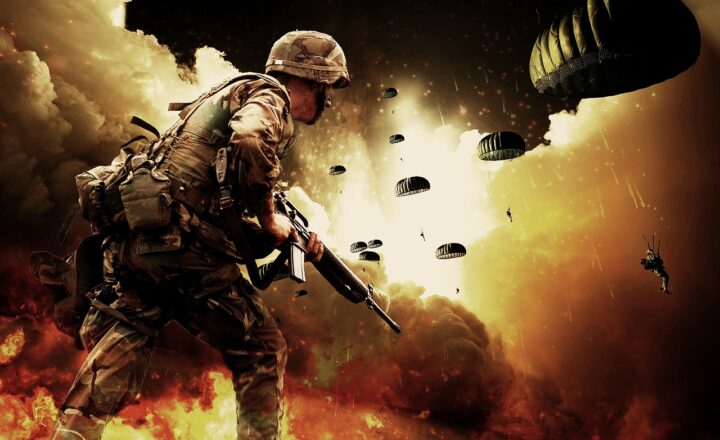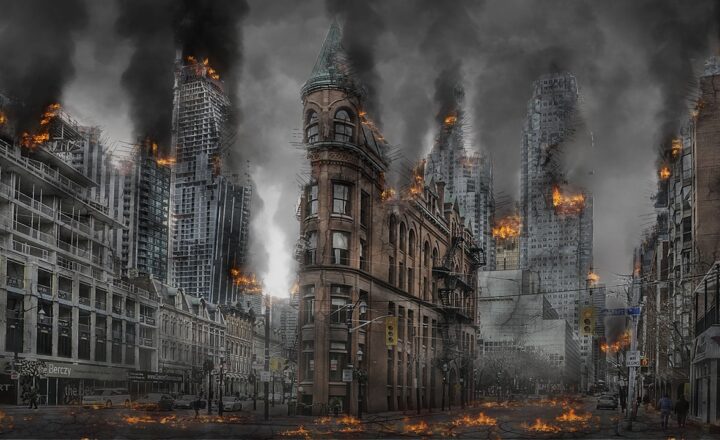The Psychology of War: How Weapons Are Designed to Intimidate
November 11, 2024

War has always been an intrinsic part of human society, with its roots embedded deep in our history. From primitive tribal conflicts to sophisticated modern warfare, the tools of war—especially weapons—have evolved significantly. However, it’s not just the effectiveness of a weapon that matters; the psychological impact it has on both the adversary and the user plays a crucial role in warfare. This article explores how weapons are designed not only for efficiency in combat but also to intimidate and instill fear in opponents.
1. The Psychological Warfare Component of Weapons
Psychological warfare refers to the use of various tactics to influence the perceptions and behaviors of individuals or groups to achieve strategic objectives. One aspect of this is weapon design—how certain weapons can intimidate opponents before any physical confrontation occurs.
Weapons like the atomic bomb or laser-guided missiles are not just about their destructive capabilities; they carry psychological weight. The mere existence of such weapons can deter adversaries from conflict. This phenomenon can be traced back to several principles:
- Fear as a Tool: A weapon’s design can evoke visceral fear. For example, weapons that appear intimidating—such as large-bore rifles or menacing aircraft like bombers—can cause psychological distress, potentially making adversaries more likely to capitulate without combat.
- Symbolism of Power: Certain weapons are designed with significant symbolism that conveys power or authority. For example, the sleek design of fighter jets and their aerial maneuvers promote a sense of invincibility, instilling fear in opponents who may be aware of their capabilities.
- Group Dynamics: When individuals view their weaponry as an extension of their identity—such as how soldiers form a bond with their combat gear—it can increase their aggressiveness and instill a sense of superiority, enhancing the intimidation factor on the battlefield.
2. Historical Context: Weapons and Intimidation
Throughout history, weapons have been meticulously designed to intimidate. For instance, the longbow was developed not only for its lethal capabilities but also to outmatch the crossbows of the time, displaying an image of advanced technology and tactical superiority. Historical examples include:
- The Roman Legion: The design of the Roman gladius combined practicality with ceremonial elements, making it not just a tool for war but a symbol of Roman might. Their strict formation and the sight of disciplined soldiers wielding these swords would often demoralize enemies.
- The Sword of the Samurai: The katana was as much a weapon as it was a symbol of status and heritage. Its craftsmanship meant that just the sight of a drawn sword could intimidate opponents and convey mastery of the way of the warrior.
- Nuclear Weapons: The advent of nuclear weapons produced a shift in global power dynamics. The sheer destructive potential and the psychological implications of their use remain a powerful deterrent in international relations, keeping large-scale conflict at bay post-World War II.
3. The Design Elements of Intimidating Weapons
Weapon design integrates a variety of elements that contribute to their intimidating presence:
- Visual Aesthetics: The appearance of a weapon can dramatically impact its psychological effect. Larger, bulkier designs create a sense of foreboding, while sleek, swift designs imply power and efficiency. For example, the F-22 Raptor fighter’s angular design and stealth capabilities contribute to its reputation as a formidable force.
- Sound Design: The auditory experience associated with weapons, such as the roar of artillery or the whir of missiles, also plays into intimidation. These sounds are designed to create fear, serving as harbingers of destruction. The booming sounds of artillery in the distance evoke a sense of impending doom.
- Color Schemes and Branding: The color schemes of military vehicles and weapons often incorporate dark colors, which psychologically convey severity. Today, branding plays a role in presenting weapons as cutting-edge technology, maximizing their impact on public perception.
4. The Role of Media in Weapon Perception
Media representation greatly influences societal perceptions of weapons. From movies to video games, the portrayal of weaponry often emphasizes their destructive capabilities, reinforcing the image of weapons as terrifying objects. This portrayal shapes public attitudes and can lead to either glorification or vilification of certain technologies.
Films set in wartime often dramatize the destructive capacity of advanced military technology, furthering the perception of weapons as symbols of fear and power. For instance, movies that showcase the impact of bombings often leave audiences with haunting visuals, drawing parallels to the real psychological effects of warfare on both soldiers and civilians.
Additionally, video games frequently glamorize military exploits, reinforcing a culture that idolizes warfare and the tools that facilitate it, further influencing how society views weapons.
5. Conclusion: The Multifaceted Impact of Weapon Design
The design of weapons transcends mere functionality; it encapsulates psychological strategies aimed at both enemies and allies. By understanding the art and science behind weapon intimidation, we can better grasp the complexities of conflict. The historical and contemporary contexts highlight how the impactful symbolism, visual design, and media portrayals create a narrative as potent as the weapons themselves.
In conclusion, the relationship between weapon design and psychological warfare embodies a multifaceted interplay of fear, power, and societal perception. Recognizing this allows for a nuanced understanding of warfare, one where the mere sight of a weapon can become a powerful tool of intimidation, shaping the outcomes of conflicts even before they begin.







